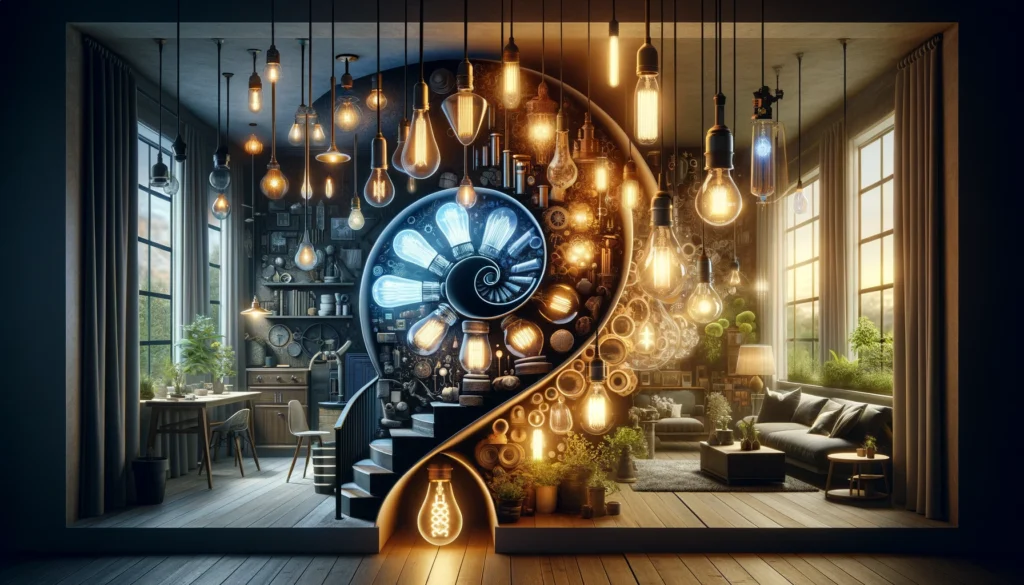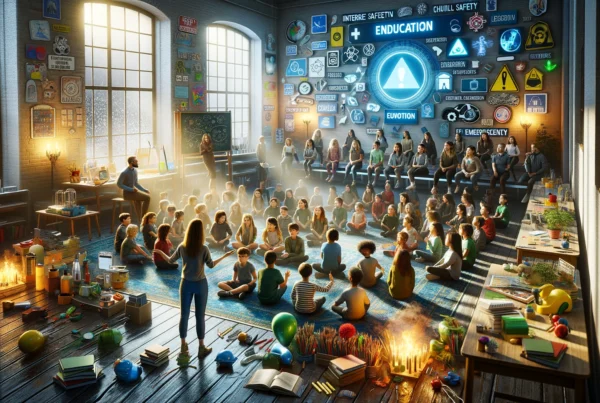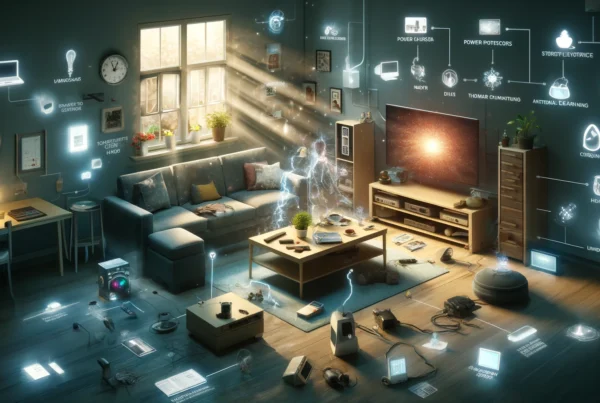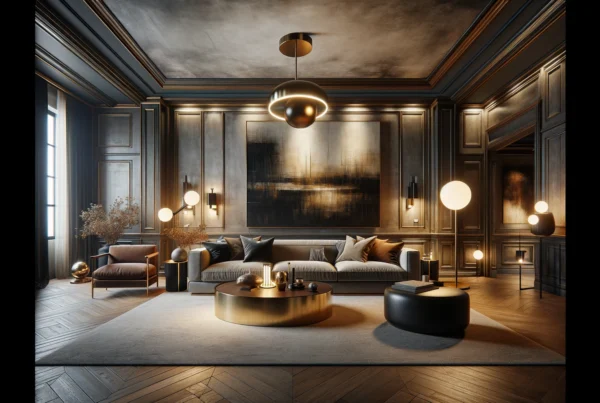Introduction
Light illuminates our homes, shaping the atmosphere and mood of our living spaces. Since humanity first sought to banish the darkness of night, the evolution of home lighting has been a tale of technological innovation and creative design. From the flickering flames of ancient lamps to the soft glow of modern LEDs, the journey of home lighting is as much about our cultural history as it is about the science of illumination. This blog delves into the transformative eras of home lighting, reflecting on how each decade’s unique contributions have lit the path to the present day.

The Early Days: Gas and Candles
Before the widespread adoption of electricity, homes were lit by the warm, but hazardous, glow of gas lamps and candles. These lighting methods, though charming, posed significant risks, including fire hazards and toxic fumes. The soft and flickering light of candles also dictated the rhythm of daily life, often limiting activities after dark. Gas lighting, while a step forward, required an extensive network of pipes and was not without its own dangers, such as gas leaks and explosions.

The Birth of Electric Light
The true revolution in home lighting began with the introduction of the electric light bulb. Thomas Edison’s successful commercialization of the incandescent lamp in the late 19th century forever changed how we light our homes. Initial skepticism quickly faded as electric lighting proved to be safer, more reliable, and longer-lasting than any predecessor. This innovation brought about a profound transformation in interior design and human activity, extending the productive hours well into the night.
The Mid-Century and the Rise of Aesthetics
By the mid-20th century, home lighting had become a fashion statement. Fixtures were designed not just for functionality but to complement the aesthetic of the home. The era saw the rise of iconic designs, such as the Sputnik chandelier and the Arco floor lamp. Concurrently, fluorescent lighting emerged, offering an alternative to incandescent bulbs with its diffused light and elongated shape, albeit with a less cozy ambiance, often relegated to kitchens and garages.
The ’70s to ’90s: Efficiency Takes the Spotlight
The energy crises of the ’70s brought efficiency into the limelight. As awareness of energy consumption grew, so did the push for lighting that could provide brightness without the burden of high electricity bills. The response came in the form of halogen lamps, which offered improved efficiency and a closer approximation to natural daylight, and compact fluorescent lamps (CFLs), which used less energy than their incandescent counterparts and lasted longer.
Entering the 21st Century: LEDs and Smart Technology
The LED (light-emitting diode) represents the current pinnacle of lighting technology, characterised by its exceptional energy efficiency and longevity. LED lighting has given rise to an era where versatility in colour and brightness is a given, and the ability to control these features is often in the palm of our hands. The integration of smart technology has taken this further, allowing us to adjust lighting remotely and tailor our environment to our needs, whether for work, relaxation, or entertainment.
Current Trends: Sustainability and Personalization
Today’s home lighting trends prioritise sustainability and personalization. The shift towards eco-friendly solutions is evident in the increasing adoption of solar-powered lights and the phasing out of less efficient bulbs. Innovations in lighting now not only cater to our desire to reduce our environmental footprint but also our need for personalization. Customizable lighting systems can now change in colour and intensity to match our mood or the task at hand, redefining the concept of personalised comfort.
The Future of Home Lighting
Looking ahead, the future of home lighting shines bright with potential. Technologies like OLED (organic light-emitting diodes) promise even more efficient and flexible lighting options, while concepts like light fidelity (Li-Fi) could turn our lamps into high-speed data transmission devices. As lighting continues to integrate with the broader ecosystem of smart home devices, it will play a pivotal role in the intuitive and adaptive homes of the future.

Conclusion
The evolution of home lighting over the decades mirrors our journey as a society, showcasing our drive for better, safer, and more beautiful ways to light our lives. As we stand on the cusp of new discoveries and innovations, it is clear that lighting will continue to evolve, guided by the dual stars of technological advancement and human creativity. In the symphony of home design, lighting remains a vital and dynamic force, ever-changing to meet the needs and dreams of its audience.





